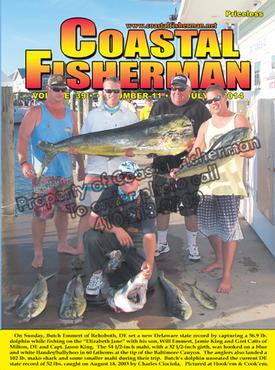


Article by Capt. Steve Katz
 Antennas
Antennas
As a follow-up to last weeks column about VHF radios, this week we will review the antennas that make up the rest of the radio system.
There are a lot of different types of antennas used on boats. We will review the most common, the VHF radio antenna. Our marine VHF operates in the frequency range of 156MHz-162MHz and requires a marine VHF antenna matched to this frequency.
Length
Antenna lengths are important for a few reasons. One, the physical length is what you see on the outside, 4’, 8’ 17’, 23’ etc , designed to fit your boat and mounting style. Antennas also have an electrical length, designed inside the antenna and usually referred to as a wave, ¼ wave. ½ wave, 5/8 wave etc. This is an electrical measurement that is proportional to the wavelength of the operating frequency of the radio, so for marine VHF, a 1/2 wave antenna is about 36” long (electrically on the inside of the fiberglass casing). The manufacturers design the inside of the antennas to electrically match one of mathematical wavelengths and at the same time design the outside of the antenna to meet the needs of boaters, generally producing popular sizes. This wavelength is not necessarily a performance factor but primarily a mathematical function in the design matched for marine VHF signals.
Antenna length, or height off the water, is very important since VHF radio waves travel straight, in the line-of-sight from antenna to antenna, so the taller your antenna, the longer range your VHF radio can cover. The Ocean City Coast Guard, with its very tall antenna tower can talk and listen much farther than we can aboard our boats.
Styles
The most popular style of marine VHF antenna is the 8-foot fiberglass whip. Since a taller antenna is better, often boaters will install an 8-foot antenna on an 8-foot mast, resulting in a 16-foot antenna height or similar configuration. Some antennas have a mast integral with the whip, such as the 23-foot Shakespeare, popular on large sportfish.
The larger the antenna the more critical the mounting method and proper support becomes. Some antennas are very small, with only a short stainless steel whip and a larger round base. These antennas are popular with small boats or in areas where larger antennas will not fit.
There is a wide range of costs for VHF antennas, depending on constructions and options. Prices begin at $50 and can run more than $500. The most popular brands are Shakespeare, Digital Antenna and Comrod.
Gain
Another important factor in antenna design is the gain of the antenna. This is very important for the performance of the antenna.
Before we get into what gain is, for those who are wondering, more is not always better. Gain, expressed in decibels (dB), is the "apparent" increase in power that is available from the antenna. Marine VHF radios are limited to 25 Watts of transmitting power, but a higher gain antenna can “focus” this energy and make your VHF radio appear to have more power than 25 watts (3dB of gain doubles the apparent power). How does this happen when there is no amplifier in the antenna? The original VHF power is focused into a narrower beam, similar to a magnifying glass that focuses sunshine to a point that can start a fire. The high gain antenna focuses the VHF transmission to a narrow horizontal beam, generally parallel with the water. This is great if your boat is sitting still in calm water and the antenna is exactly vertical. If your boat and antenna is moving side to side and you have a high gain antenna, the narrow beam may be transmitting up into the sky or down into the water, so your signal may not reach the listening VHF radio. On the contrary, a low dB gain antenna transmits your signal on a wide horizontal beam, covering a lot of space even with a moving boat. A good comparison would be a flood light compared to a spot light.
Wiring
Antenna wire or coax is a special cable that has an inner conductor surrounded by a tubular insulating layer and an outer shield. VHF and many other marine antenna systems use a 50 Ohm impedance coax, such as RG58 or RG8X. A popular TV coax wire, RG6 is 75 Ohms and not compatible with marine VHF antenna systems. Using the correct wire is very important since there can be significant power loss within the coax and connectors. The National Marine Electronics Associating (NMEA) allows for a maximum of 3db signal loss, which would reduce the radios output power by half. As an example, an installation with 51-feet of RG58 coax and one junction results in a slightly over 3db signal loss. Substituting RG8X coax in this example results in 2.5db signal loss and meets the NEMA installation requirements, giving you a farther reaching VHF signal.
Combining a good VHF radio with a good, properly connected antenna will result in a VHF radio that can both receive and transmit clearly for a long distance.
Captain Steve Katz is the owner of Steve's Marine Service and holds NMEA MEI, AMEI, NMEA2000 certificates, ABYC Master Technician certification and factory training from many manufacturers.